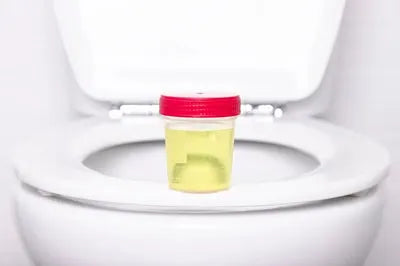When you need to urinate, several nerves and muscles work together to hold your urine in until you are ready to urinate. Your brain controls this process through the nerves.
Neurogenic bladder is a condition in which the brain or the nerves are not able to effectively communicate with the muscles in the bladder. This causes you (or more precisely, your brain) to lose control over your bladder and your ability to urinate
Because of this condition, your bladder may fill beyond capacity and result in urinary incontinence, involuntary leakage of urine. Or, your bladder may not be able to empty itself completely when you urinate, this condition is called urinary retention.
Both of them can have harmful consequences and increase your risk of Urinary Tract Infections.
The most common symptoms of neurogenic bladder include:
-
A weak or dribbling flow of urine.
-
Urinating frequently or more than average (8 or more times a day).
-
Feeling urgency as if you can’t hold your urine any longer.
-
Leaking of urine without your notice.
-
Difficulty knowing when your bladder is full
-
Having to strain or force yourself to urinate.
5 Types of Neurogenic Incontinence
Neurogenic bladder classification is done on the basis of its characteristics and type of bladder dysfunction. There are 5 types of neurogenic incontinence bladders:
-
Un-Inhibited Bladder
Un-inhibited means without any restraint or control. With un-inhibited bladder you suffer frequent and urgent need to urinate, and urge incontinence. Urge incontinence is the urgent, uncontrollable need to pee several times in a day that is difficult to delay. You don’t usually know when your bladder is full and experience a lower bladder capacity
-
Reflex Neurogenic Bladder or Automatic Bladder
Common among people with severe spinal cord injuries and diseases. You don’t leak urine as frequently and the quantum of leak is less too, but you also won’t be able to urinate voluntarily. You will still be able to feel if the bladder is full or empty.
-
Autonomous Bladder
Autonomous means independent. An autonomous bladder loses all control and sensation. You will never know when your bladder is full and you won’t be able to initiate urination on your own. Since all sensation is lost, the bladder empties itself when the pressure exceeds the bladder’s capacity. This results in continuous overflowing and dribbling incontinence.
-
Sensory Paralytic Bladder
Damage in the fibers to the brain or bladder sensory nerve (nerves that send and receive signals between the bladder and the nerves) can result in sensory paralytic bladder. You won’t be able to feel if your bladder is full or empty since all sensation is lost. On the other hand, you would still have control over when to empty your bladder or urinate.
-
Motor Paralytic Bladder
Injury and extensive surgery related to bladder can cause motor paralytic bladder. Motor paralytic bladder is the exact opposite of sensory paralytic bladder. With motor paralytic bladder you will be able to feel if your bladder is full or empty but you won’t be able to initiate urinating voluntarily.
Motor paralytic bladder is also accompanied with large bladder capacity and low volume of urinary retention.
Conclusion of Neurogenic Bladder Types
Neurogenic bladder condition affects 90% of people with spinal cord injuries. It is also common among 50 to 80% of people with multiple sclerosis (a disease in which the immune system eats away at the protective sheath that covers nerve fibers).
Currently, there is no complete cure for neurogenic bladder. However, treatment can help improve the symptoms and prevent further complications like Urinary Tract Infections (UTI) and kidney damage. Making lifestyle changes can also have a significant impact on the quality of your life. If things go south, you still have Friends Adult Diapers to watch your back. Friends Adult Diapers:
-
Provide superior absorption for up to 16 hours.
-
Are made to fit YOUR body perfectly to prevent leaks, spills and uncomfortable bunching.
-
Have side leak guards to prevent trickle leaks from the sides.
-
Are free of chlorine, latex, toxins and harmful chemical fragrances.
-
Are available in a number of different variants including overnight, pant-style and tape-style diapers and a number of sizes including S, M, L, XL and XXL.
-
Those who leak only a few drops of urine can use Friends Adult Insert Pads.
-
To protect bedding, put Friends Underpads on your mattress for night-time incontinence.
With Friends Adult Diapers, Azadi Mubarak!
















